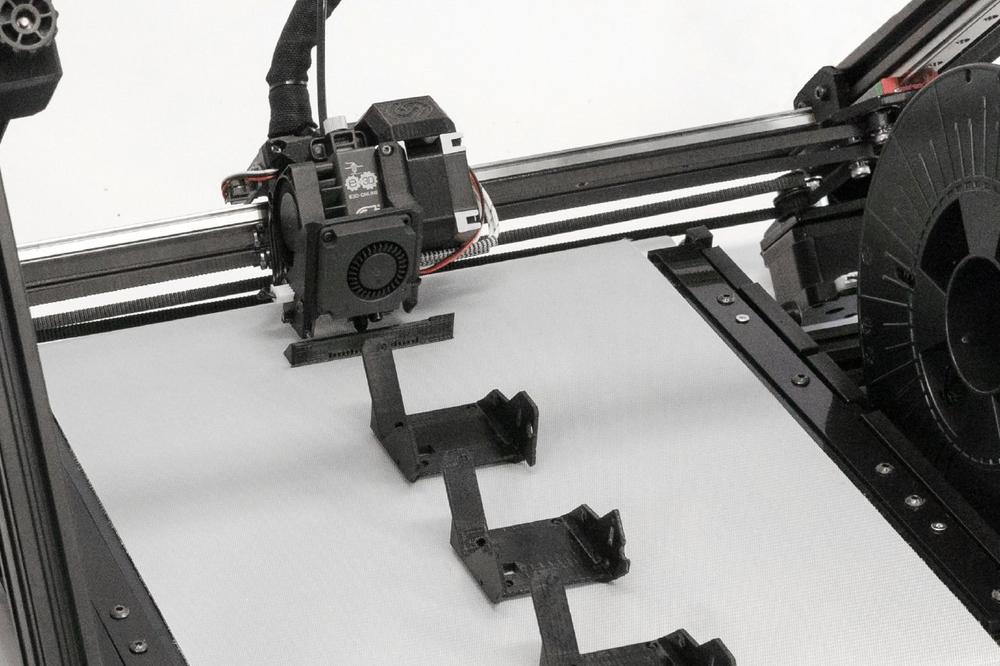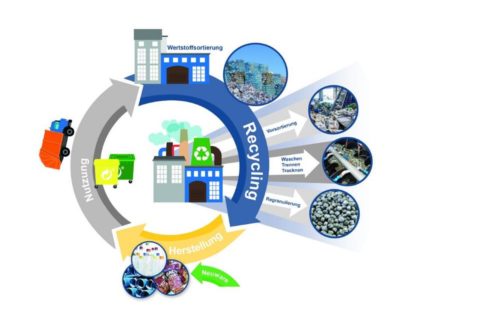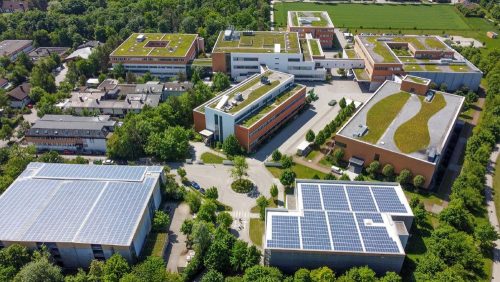
3D printing – Technological novelty for more agile manufacturing, even on a larger scale
How new technologies are facilitating agile production
Agile production using "additive manufacturing" (AM) is based on the use of so-called rapid technologies. This means that all manufactured objects are created from scratch without the need to remove material or use negatives. The objects are applied directly and require only the material used and the devices popularly known as 3D printers as tools. In most cases, these work on a layering principle in which the digital model is detailly built with thermoplastic material. The material is often synthetic, which runs like a thread from the spool, is heated, and then hardens in the shape it was formed into. There are no limits to creativity with 3D models, and the printing parameters can be easily set on the PC or directly on the device. At the beginning of the 3D printing era, it was mainly used to create complicated models and prototypes before moving into final production with other manufacturing methods. After that, 3D printing became more popular with individuals, who could use it to bring their favorite characters from literature or movies, or handy little things, into their homes. But now additive manufacturing also offers new opportunities for large-scale production of products for end users. However, acquiring suitable AM industrial machines was very expensive and required a lot of space. However, a lot has happened since then.
3D belt printing as a one-in-all solution
A real innovation in this field is 3D belt printers, such as those from the German company iFactory3D. Thanks to their design and refined technology, these are suitable for uninterrupted production in an "endless loop" for weeks at a time. This means that production does not come to a standstill even when all other machines have to be shut down over the weekend due to a lack of supervision. Thermoplastic filaments are also used as the material here. In technical jargon, this process is therefore called Fused Filament Fabrication (FFF). Martin Huber, co-founder and Chief Technology Officer (CTO) of the company, is responsible for the development of the One Pro conveyor belt 3D printer from iFactory3D. His main concern was to create an all-in-one solution that is also affordable. The One Pro’s compact size and high return on investment make it an ideal entry into in-house manufacturing for SMEs.
Construction characteristics result in material savings for lower costs and more sustainability
As a 3D belt printer, the One Pro is ideal for agile production and offers numerous advantages for producing complex workpieces as one-offs or in small batches. For example, the 45-degree angle of the print head prints cavities and overhangs without needing support material. In this way, additional material can be saved in this already economical process. And in 3D printing, that also means time savings. So you get higher productivity at lower costs – and the sustainability aspect should not be overlooked either.
In addition, printing at a 45-degree angle creates smooth surfaces and no hard edges. In practice, this is highly valued for producing orthopedic shoe insoles. To stay with this example: All sizes of shoe insoles can be achieved with the infinite length of the print bed. In addition, there is a significant material saving of up to 80 percent in this area compared with conventional production methods, since, for instance, no negative molds are required. Until now, many commercially available 3D printers have failed either because of quality, build space, or speed. However, with conveyor belt printing, none of these otherwise inhibiting problems exist.
Example for the supply chain management benefits
The following example from supply chain management illustrates the additional potential offered by the all-in-one solution. Here, experience shows that supply chains must always be kept in view in order to avoid delivery bottlenecks. Especially in recent years, shaken by the global pandemic and political tensions, the dependencies on suppliers have become clear and have awakened the desire of many to be able to act more autonomously. With the help of iFactory3D, numerous companies have already significantly reduced their costs in this area while achieving greater independence. The experience of a specialist company for traffic control systems from Leverkusen shows that it is possible to produce components with the One Pro in an uncomplicated way – and save money at the same time. The flexible device also helped to speed up design processes, as they can now run in-house. When production was temporarily halted due to a lack of parts from other suppliers, the printer could still be used for R&D on new products. And once the green light was given regarding delayed goods, the printer would run for a few days and the overall production could resume immediately. The purchase of the belt printer had more than paid for itself for the company in less than 2 months, and the one-time cost of the device had been amortized.
So could agile production using 3D belt technology be something for your business?
Designed to meet the demands of agile production, the One Pro provides excellent print quality without the need to invest a lot of time in quality management, let alone monitoring production processes. This gives founders and start-ups, as well as the self-employed and SMEs, the opportunity to set up serial production with low initial costs or to further expand and automate their existing production and become less dependent on supply chains. The 3D belt printer from iFactory3D thus ensures in the end quite the best "Return on Investment" (ROI).
iFactory3D automates additive manufacturing through its cutting-edge technology – 3D belt printing.
Founded in 2020 by Artur Steffen and Martin Huber, the company is working on an industrial revolution to make additive manufacturing competitive with mass production in terms of automation and scale, without losing the clear benefits of 3D printing: Flexible and individualized production on demand, resulting in less waste. In addition, it eliminates long transportation routes and complicated supply chains with specialized manufacturing processes in Asia.
iFactory3D brings series production back to the customer – local supply with maximum independence for producers.
iFactory3D stands for innovation & productivity, for reliability & flexibility, and sees itself as an enabler: With the practically unlimited possibilities of a 3D belt printer, barriers can be easily overcome, and more groundbreaking ideas have the chance to be implemented economically and efficiently.
iFactory3D GmbH
Wanheimer Str. 43
40472 Düsseldorf
Telefon: 021115859748
http://ifactory3d.com/
Communication Manager
Telefon: 021115856575
E-Mail: corinna.marmetschke@ifactory3d.com
CEO
![]()





